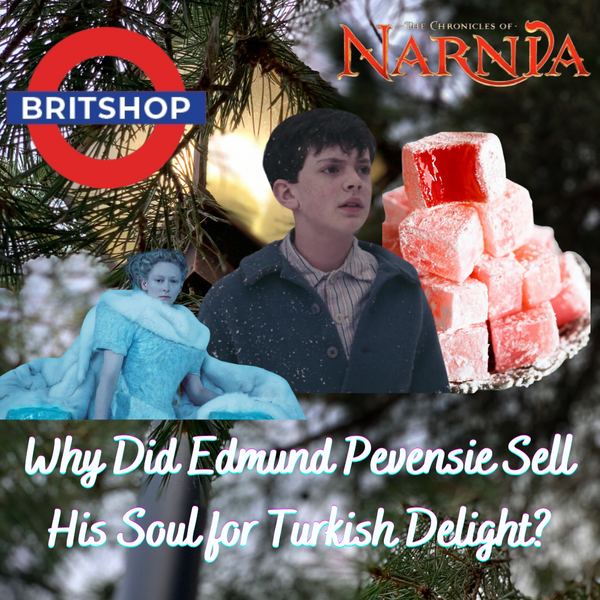Why Did Edmund Pevensie Sell His Soul for Turkish Delight?
Another one of our biggest sellers here at BritShop is Turkish delight, usually in the Fry's brand.
Turkish delight is the British name for a confection that dates back to Turkey's Ottoman Empire called lokum. It's one of many spellings from its origin, rahatü’l-hulkum, which translates to "giving rest to the throat." Historians believe this treat dates back to the 18th century.
The earliest lokums were flavored with almonds, pistachios, rose oil, or musk. Importation of lokum to England began in 1861, where they surged in popularity as an exotic dessert. At that time, lokum was known as "Lumps of Delight."
Lumps of Delight were so popular in England that they resulted in specialty stores dedicated to them. Such a store was even featured in the final unfinished novel of Charles Dickens, The Mystery of Edwin Drood. The demand quickly led to requests for additional flavors, which began experiments with those such as lemon, violet, rose, orange, or lemon, coated with any number of syrups.
It was at this time that lokums started being known as Turkish delight in England.
According to food expert Cara Strickland, "Many of these flavors are still available today, with new additions, including chocolate, among them. Traditionally, Turkish delight is packaged in a box, often hexagonal. The box is lined with wax paper to completely cover the pieces of candy and keep the powdered sugar from escaping."

The Fry's version of Turkish delight, which is rose-flavored and coated with milk chocolate, first appeared in 1914 and became a large success in the United Kingdom.
Turkish delight surged in popularity once more in the 21st century, when Disney and Walden Media adapted C.S. Lewis' classic children's novel The Lion, the Witch and the Wardrobe into the first in a series of live-action films called The Chronicles of Narnia. Diehard Narnia fans know that Turkish delight also featured in the original novel as well as the largely known Disney adaptation.
When middle child Edmund Pevensie first enters the land of Narnia through the mystical wardrobe in search of his sister, he's intercepted by Jadis, Queen of Narnia: or so she calls herself. She's really the White Witch, and upon learning that sons of Adam and daughters of Eve have once again arrived in Narnia, she tries to gain Edmund's trust by telling him that she can give him anything he wants to eat.
Edmund chooses Turkish delight, and within seconds, he has a box in his hands that he consumes fervently. But what has puzzled literary scholars and academics for decades is why, out of all the food in the world the boy could have chosen from, he chose Turkish delight. Moreover, was it worth selling out his family for a few bites of a tasty treat?
Well, according to historians, Turkish delight cast a hypnotizing spell over late Victorian England, so they were a common treat. The Lion, the Witch, and the Wardrobe also finds the land of Narnia in a state where it is always winter, but never Christmas.

The novel is said to be inspired by C.S. Lewis' experience boarding schoolchildren in his family's home beginning in 1939 with World War II. During the war, Christmas trees were hard to come by, among other things, like candy and treats. It's not hard to figure that both Edmund and his creator had experienced wartime rationing.
Better yet, confectionary rationing didn't end in England until 1953, three years after The Lion, the Witch, and the Wardrobe was first published. Clearly, having lived through a period where candy and treats were not a necessity, Lewis had Turkish delight on the brain. It could have likely been a favorite of his growing up in the 1900s that was stolen by the war.
In the first installment of The Chronicles of Narnia, Edmund is an unlikeable, uncooperative character. The war has torn apart his family and he takes out his anger on his siblings.
According to Strickland, "For Edmund, Turkish delight represented a way to taste happier times, when his family was all together and the future was unmarred by world conflict. It is hard to blame him for reaching for the box the witch offers and filling his mouth as quickly as possible, to make up for lost time."
Shop for Turkish delight and more at BritShop.ca!


